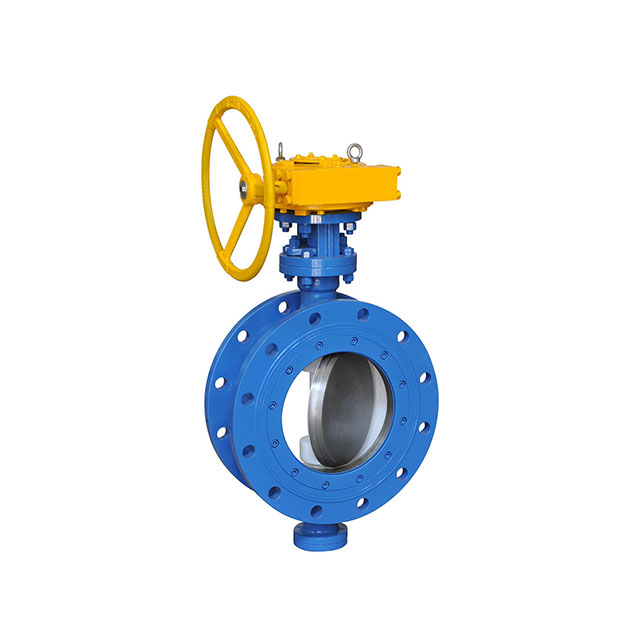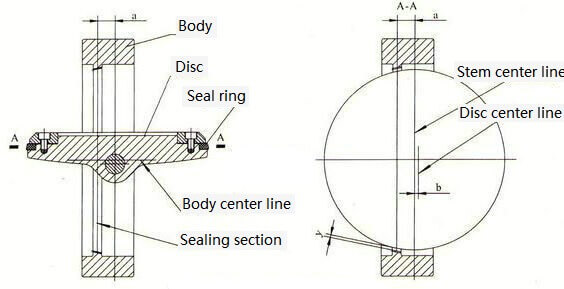Table of Contents
ToggleThis Ultimate Guide provides a comprehensive overview of double eccentric butterfly valves, including their design, applications, advantages, and features. Whether you’re an engineer, technician, or just curious about valve technology, this guide is a valuable resource to enhance your understanding and improve your operations.
There are many varieties of butterfly valves on the market today, but it’s crucial that you select the appropriate one for your application. Selecting an improper type may lead to serious system malfunction and makes repairs difficult.
Before purchasing a butterfly valve, the pressure rating must be taken into consideration, as this will indicate its ability to withstand energy usage effectively and operate reliably. Let’s take a look at the double eccentric butterfly valves in detail.
What are double eccentric butterfly valves?

A double eccentric butterfly valve, also referred to as a high-performance butterfly valve, can be found in water plants, power plants, steel smelting facilities, chemical industries, and environmental facilities that require efficient water drainage systems. They’re often employed for use when draining waste water from these facilities or transporting products that require high performance.
Eccentric butterfly valves provide a convenient and cost-cutting alternative to the globe and ball valves in many applications, being cheaper, lighter, and simpler to install than their counterparts. Furthermore, metal seats may provide improved corrosion protection as well as extend their lifespan significantly.
Types of Double Eccentric Butterfly Valve
Available double eccentric butterfly valves are widely utilized across industries, from oil and gas applications, HVAC, waste treatment facilities, and shipbuilding factories to shipbreaking facilities.
These high-performance valves feature two offset stems to minimize contact between the disc, seat, and body, extending service life significantly. Furthermore, these high-pressure applications can accommodate particulate fluids with ease.
- Double Offset
Double Offset butterfly valves are high-performance butterfly valves typically utilized in industrial settings. They offer various benefits, including reduced friction between disc and seat as well as longer than average lifespan.
These valves can handle liquids and gases of all varieties, being installed into any space with ease. Furthermore, their lightweight design makes them user-friendly; manual control or remote activation via electric or pneumatic actuators may be possible, depending on your preference.
- Triple Offset
Triple Offset Butterfly Valves, also referred to as tri-Centric Butterfly Valves, utilize three offsets which enable their disc to freely spin around its central axis for frictionless stroking throughout its operating cycle.
Triple offset butterfly valves boast corrosion resistance, making them suitable for high-pressure/high-temperature applications like oil & gas, HVAC, waste/wastewater treatment facilities, and shipbuilding factories.
- Concentric
Concentric butterfly valves (commonly referred to as wafer-style butterfly valves) are used to seal against bi-directional pressure differential and prevent backflow in systems designed for unidirectional flow. To do so, tightly fitting seals such as gaskets or O-rings, precision machined parts, and flat valve faces on both upstream and downstream sides are employed in order to effectively maintain an effective seal against bi-directional pressure differential and avoid backflow in systems that were intended for unidirectional flow.
- PTFE Lined
A PTFE-lined double eccentric butterfly valve is an excellent solution for general service applications involving highly corrosive media, featuring high Kv (Cv) values and minimal pressure drop to provide long service life under difficult conditions.
This valve features a corrosion-resistant single-component thrust bearing/disc spacer designed to reduce body wear while assuring a positive stem-to-disc drive connection, making it an excellent solution for handling water, oil, steam, and gas in an economical and light design.
Applications of Double Eccentric Butterfly Valve
Double eccentric butterfly valves are commonly used in a wide range of industrial applications, including:
- Water Treatment
- HVAC Systems
- Oil and Gas
- Chemical Processing
- Food and Beverage
- Pharmaceutical
- Power Generation
Working Principles of Double Eccentric Butterfly Valve
- A Double Eccentric Butterfly Valve controls the flow of fluids in a pipeline using a circular disc with a rod through the center that rotates.
- The valve has two off-centered shafts that offset the disc, creating a seal between the disc and the valve seat.
- When fully open, the disc is perpendicular to the fluid flow, allowing for maximum flow rate.
- As the valve is closed, the disc rotates to create a tighter seal, minimizing leakage.
- The double eccentric design reduces the torque requirement during operation and minimizes wear and tear on the valve, resulting in a longer lifespan.
- This valve is suitable for a wide range of applications, including water treatment, chemical processing, and power generation.

Advantages and Features of Double Eccentric Butterfly Valves
Double eccentric butterfly valves make an excellent choice for many applications, as they are easy to operate, feature strong sealing power, and boast long service lives.
These lightweight valves are also easy to install, making them suitable for pipelines and water treatment plants. Manual or automatic operation depending on their model, is available.
- Reduced Leakage
Double eccentric butterfly valves feature reduced leakage when compared to single offset and concentric design valves, providing greater efficiency in applications where zero leakage performance and high pressure or temperature resistance are essential. This makes double eccentric butterfly valves an invaluable asset.
This type of valve features an offset seat from both the disc trunnion center line and body seal centerline, creating a cam action during operation that lifts it out of its seal. This creates excellent control of aperture size, reduced flow resistance, tight shutoff seals, and smooth operation.
- High Pressure Bearing Capacity
Double eccentric butterfly valves are some of the most widely-used eccentric butterfly valves available today and are considered high-performance butterfly valves.
This type of valve features a disc that is offset from its seat, so when it rotates, it shifts away from it rather than around it when rotating. This design helps increase sealing capacity while decreasing wear and tear on the valve itself.
- High-Temperature Resistance
Double eccentric butterfly valves operate in harsh and high-temperature environments that necessitate materials with superior resistance to oxidation, other environment gases, and mechanical property degradation. Stainless steel is typically preferred because of its ability to handle acidic fluids while handling pressures and temperatures with ease.
Double offset butterfly valves use soft seats with an angular offset in their body sealing cone axis to avoid contact between disc and seat during opening and closing, thus eliminating friction between valve and piping, increasing service life and decreasing maintenance costs.
- Long Service Life
Double eccentric butterfly valves can be utilized in numerous applications. They are often preferred for water distribution, power distribution, and industrial uses.
One of the greatest advantages of these valves is their long service life and durability; they’re built to withstand even the toughest environments.
XINTAI Valve provides industrial applications with valves tailored to their requirements. Their product portfolio consists of a gate, globe, ball, check, casting wedge, and butterfly valves; manufacturing includes machining, Epoxy coating, assembly, and packing processes.










